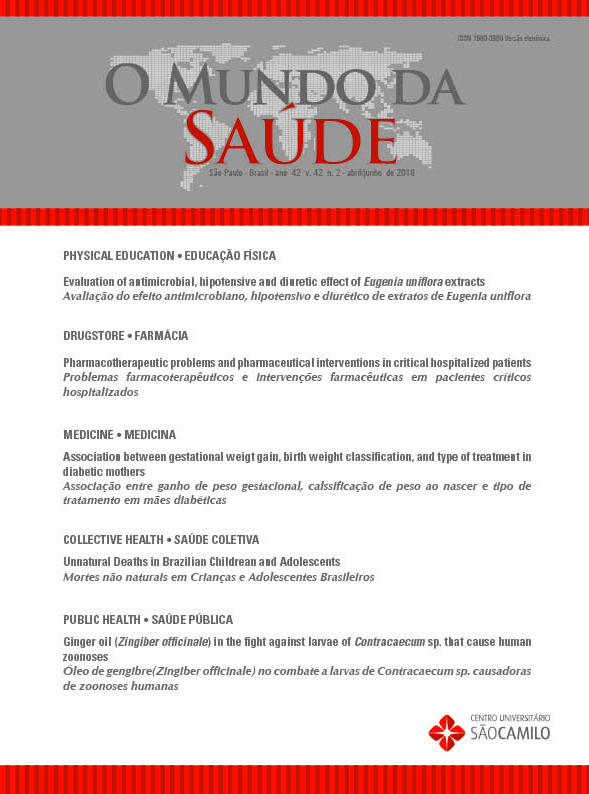Eating habits associated with nutritional deviation in elementary school students
DOI:
https://doi.org/10.15343/0104-7809.20184202478498Keywords:
Healthy eating, Nutritional status, ObesityAbstract
The objective of this study was to identify and analyze the index of nutritional deviation in primary schoolchildren from a city in the state of Rio Grande do Sul, Brazil, to promote healthy eating. A questionnaire and anthropometric evaluation of 540 students were carried out. Body Mass Index (BMI) was measured according to the parameters of the World Health Organization (WHO). The results indicated that 67.9% of the students were of adequate weight and 32% had nutritional diversion: underweight (6.6%); overweight (14.4%); or obesity (10.9%). School H showed the highest percentage of students with deviated nutritional status (43.2%): 9.2% were obese, 21.7% were overweight, and 12.3% were underweight. However, when comparing the schools by year of study, the 8th-grade classroom A of school G showed the greatest nutritional diversion (55%). High nutritional diversion provides evidence of a health risk, since they consume low amount of fruits and vegetables and have high consumption of foods which have high caloric values.






























